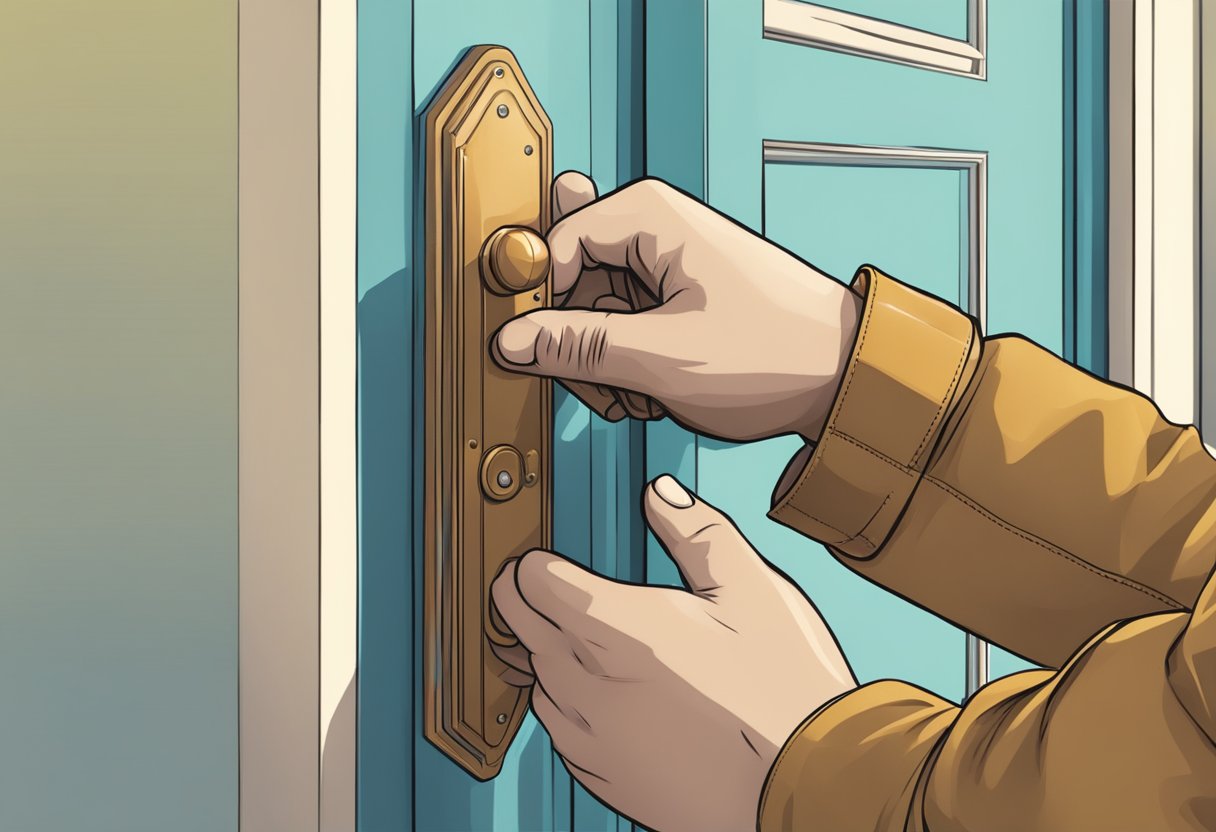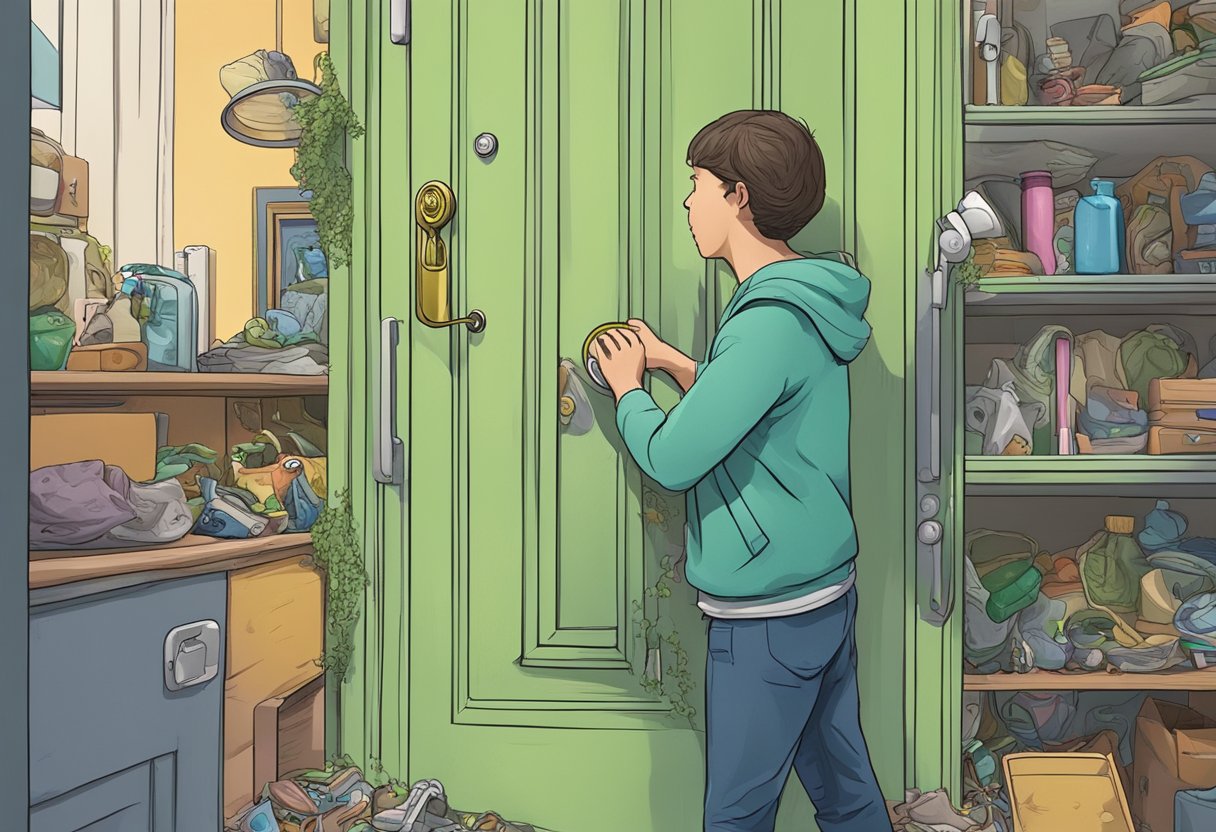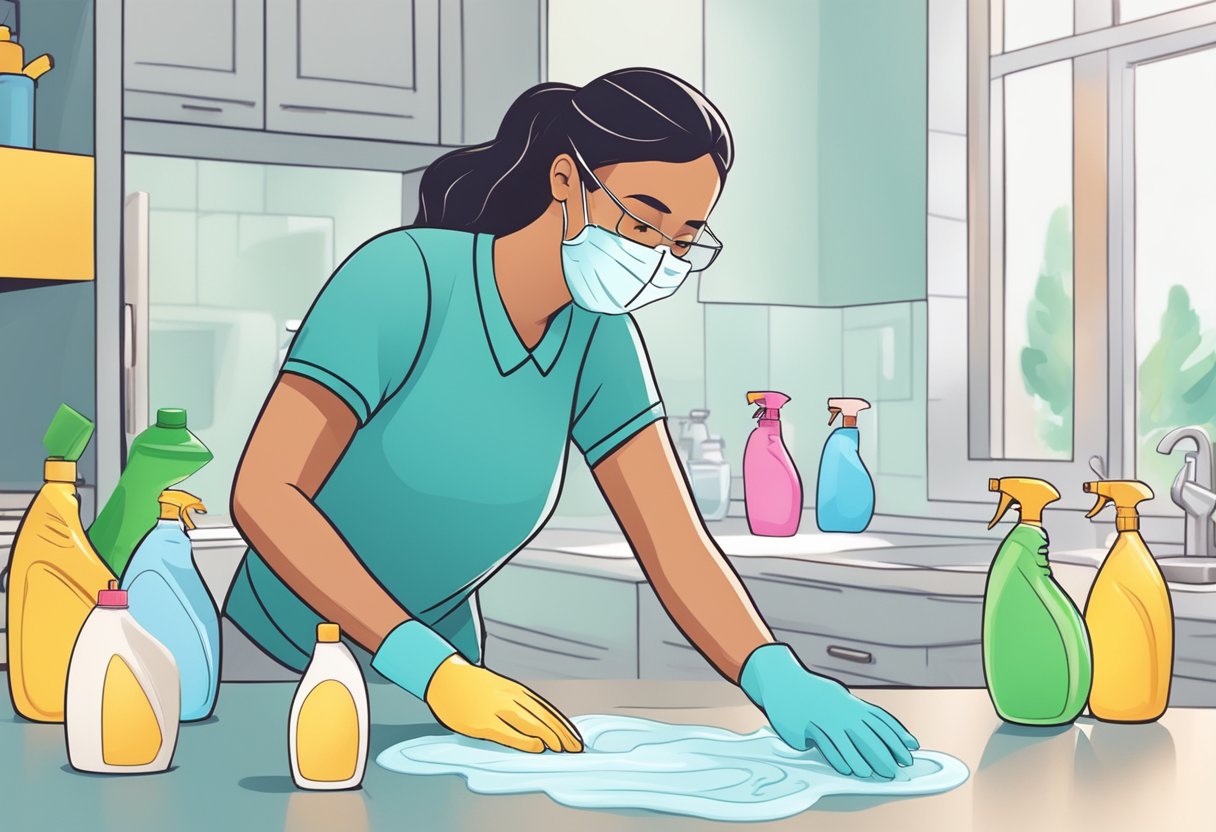Mysophobia Unveiled – Lean How the Fear of Contamination Affects Daily Life.
Table of Contents
Introduction – Mysophobia
Mysophobia, commonly called germophobia, is an intense fear of germs, dirt, and contamination. Often characterized by excessive cleanliness and sanitization behavior, this phobia can significantly affect an individual’s daily life and psychological well-being. People with mysophobia might go to great lengths to avoid situations that they perceive as dirty or contaminated, which can impact their social interactions, create challenges in their personal and professional lives, and sometimes lead to social isolation.

Understanding the nature of mysophobia is essential for both recognizing it in individuals and providing the appropriate care and support. The anxiety stemming from this phobia is rooted in a fear of illness or infection, which then triggers behaviors to avoid germs at all costs. For individuals dealing with this condition, learning about the underlying causes, psychological impacts, and available treatments is a critical step towards managing their fears.
Key Takeaways
- Mysophobia is a debilitating fear of germs affecting everyday activities.
- Recognizing the symptoms is key to seeking appropriate treatment.
- Support and coping strategies can improve quality of life.
Understanding Mysophobia

Mysophobia, also known as germophobia, is a specific phobia that can significantly impact a person’s daily life through its characteristic severe anxiety related to germs and contamination.
Definition and Symptoms
Mysophobia, commonly referred to as germophobia or bacteriophobia, is characterized by an extreme fear of germs. According to the Diagnostic and Statistical Manual of Mental Disorders (DSM-5), it falls under the category of a specific phobia. Symptoms often include excessive hand washing, avoiding public places, and a pervasive fear of contamination that can lead to distress and interference with one’s daily activities. The Cleveland Clinic provides a detailed explanation of these behaviors.
Mysophobia vs. Other Phobias
While mysophobia shares commonalities with other phobias, it is distinct in its singular focus on germs and contamination. Unlike broader phobias that may elicit a fear response to a variety of triggers, germophobia is specifically related to germs, dirt, and illness. The Verywell Mind elaborates on how this phobia organizes around contamination fears.
Prevalence and Demographics
The prevalence of mysophobia can be challenging to pinpoint due to underreporting; however, it affects both men and women and can manifest at any age. Demographic data suggests no specific age group is exclusively affected. Psych Central discusses how this phobia is a genuine concern, pointing out its presence and impact in various demographics at Psych Central.
| Key Findings | Related Keywords |
|---|---|
| An extreme fear of germs characterizes Mysophobia; symptoms may include excessive cleaning, avoidance of public places, etc. | Mysophobia, Specific Phobia, Symptoms |
| It is diagnosed according to DSM-5 criteria for specific phobias and is known under different names like germophobia and bacteriophobia. | DSM-5, Germophobia, Bacteriophobia |
| The phobia’s prevalence and demographics are not explicitly defined, but it affects numerous individuals across different age groups. | Prevalence, Demographics |
The tables and formatting employed here aim to highlight the crucial aspects of mysophobia in a confident, knowledgeable, and clear manner while maintaining a neutral tone.
Causes and Risk Factors

Mysophobia, also known as germophobia, is characterized by an excessive fear of germs. This phobia can lead to significant anxiety and behavioral changes that affect a person’s quality of life. The development of this fear can be attributed to various factors, ranging from genetics to personal history.
Genetics and Family History
Research suggests that genetics may play a role in mysophobia. Individuals with a family history of anxiety disorders are at a heightened risk, indicating that susceptibility can be inherited. Particular genetic markers associated with anxiety could also contribute to the development of specific phobias like mysophobia.
Environmental Factors
Exposure to certain environmental factors can increase the likelihood of developing mysophobia. For example, living in an environment that excessively emphasizes cleanliness, or being in close contact with individuals who exhibit compulsive cleaning behaviors, can contribute to the onset of this phobia.
Trauma and Past Experiences
Trauma and past experiences, especially those involving germs or illness, are significant contributors to mysophobia. An individual who has experienced a traumatic event linked to contamination or illness may develop a lasting fear, manifesting as mysophobia. This fear response is likely an anxiety-driven effort to avoid repeating the traumatic experience.
| Key Findings | Relevant Keywords and Entities |
|---|---|
| Genetics can influence the risk of mysophobia | Genetics, anxiety |
| Family history of anxiety disorders is a risk factor | Family history, fear |
| Environmental factors impact phobia development | Environmental factors |
| Traumatic experiences can trigger mysophobia | Trauma, past experiences |
Understanding the Genetics of Phobias provides further insight into the inherited aspects of specific phobias, while information on the role of Environmental Factors offers a broader understanding of how surroundings can influence the onset of mysophobia. Furthermore, the significance of Trauma in Phobia Development is explored, grounding the connection between past experiences and the fear of germs.
Psychological Impact

Mysophobia can have profound implications for an individual’s mental health. It often leads to heightened anxiety and emotional distress, disrupting daily routines and encouraging obsessive-compulsive tendencies that may worsen over time. Understanding these psychological impacts is key for recognizing and addressing this condition effectively.
Anxiety and Emotional Distress
Individuals with mysophobia typically experience persistent and intense anxiety over germs and contamination. This heightened state of worry can lead to significant emotional distress. The perceived threat of contamination can trigger symptoms similar to panic attacks, leading to an ongoing cycle of fear and anxiety.
Obsessive-Compulsive Tendencies
Frequently, mysophobia is associated with obsessive-compulsive disorder (OCD), where concerns about cleanliness and germs manifest in compulsive cleaning and sanitation behaviors. These actions are driven by the need to alleviate anxiety but can themselves become distressing and time-consuming rituals.
Impact on Daily Life
Mysophobia can severely impact daily activities, leading to avoidance behaviors and social isolation. The fear of germs can dictate one’s personal and professional life, significantly limiting social interactions and participation in normal activities. Over time, long-term isolation may contribute to depression and other related mental health conditions.
| Key Findings | Source URL |
|---|---|
| Intense anxiety and fear of germs | Cleveland Clinic |
| Link between mysophobia and OCD | Medical News Today |
| Avoidance behaviors impacting quality of life | Psych Central |
| Social isolation due to fear of contamination | Verywell Mind |
| Potential development of depression from isolation | GoodTherapy |
Diagnosis and Treatment

When approaching the subject of mysophobia, professional diagnosis is crucial as it lays the foundation for effective treatment. Various therapeutic methods and suitable medications are considered based on the individual’s needs and the severity of symptoms.
Professional Diagnosis
A mental health professional like a psychologist or a psychiatrist typically diagnoses mysophobia. They conduct a thorough assessment which may involve detailed interviews about one’s fears, anxiety levels, and behavior patterns. Criteria for diagnosis are often based on the guidelines established in the DSM-5, which categorizes mysophobia as one of the anxiety disorders.
Therapeutic Approaches
Cognitive Behavioral Therapy (CBT) is a common and effective treatment for mysophobia. CBT works by changing the thought patterns that trigger the fear of germs and it includes techniques such as cognitive restructuring and exposure therapy. Exposure therapy, a key component of CBT, involves gradual exposure to the source of fear to reduce anxiety over time.
Medication and Other Treatments
Alongside psychotherapy, medications may be prescribed to manage symptoms of anxiety and stress related to mysophobia. These can include antidepressants or beta-blockers. It’s important to note that medication is often most beneficial when combined with therapy, as it treats the immediate symptoms while therapy addresses the underlying cause of the phobia.
| Treatment Method | Key Entities or Notes | Source URL |
|---|---|---|
| Therapy | CBT, exposure therapy, psychotherapy | Cleveland Clinic |
| Medication | Antidepressants, beta-blockers | Medical News Today |
| Professional Diagnosis | DSM-5 criteria, Assessment by mental health professionals | Verywell Mind |
The table above summarizes key findings with details on the pertinent treatments and diagnosis methods for mysophobia being italicized or bolded where relevant.
Coping Strategies and Support

Finding effective coping strategies and accessing support networks can significantly improve the lives of individuals with mysophobia. This section discusses practical self-help techniques and leveraging support networks and resources.
Self-Help Techniques
Engaging in mindfulness and meditation practices has proven beneficial for those coping with extreme fears, such as mysophobia. Mindfulness exercises help to ground an individual in the present moment, potentially reducing anxiety caused by obsessive thoughts related to germs. Regular yoga can also complement mindfulness practices, offering both physical and mental benefits. Moreover, relaxation techniques such as deep breathing exercises and progressive muscle relaxation are useful in managing the physical symptoms of anxiety.
| Key Method | Description | Related Entity |
|---|---|---|
| Mindfulness | Focus on the present moment to reduce anxiety | Mysophobia |
| Meditation | Regular practice can help alleviate stress | Anxiety |
| Yoga | Enhances physical and mental well-being | Relaxation |
| Relaxation | Techniques like deep breathing to calm the nervous system | Stress Relief |
Support Networks and Resources
Individuals with mysophobia can find solace in various support networks and resources. Online forums and in-person groups allow people to share experiences and strategies for managing their phobia. The National Institute of Mental Health (NIMH) provides educational materials and can guide individuals towards finding professional help. Finding a therapist who understands specific phobias is crucial and can significantly enhance coping strategies through tailored treatment plans.
| Support Type | Function | Resources |
|---|---|---|
| Online Forums | Share experiences and advice with others facing similar challenges | Mysophobia |
| NIMH | Offers educational materials and guidance on professional help | NIMH |
| Professional Help | Tailored treatment plans from understanding therapists | Phobias |
Frequently Asked Questions
This section addresses some of the most common inquiries regarding mysophobia, providing clear and factual responses based on current understanding and research.
What are the common symptoms associated with mysophobia?
Individuals with mysophobia typically exhibit a pronounced fear of germs, leading to behaviors aimed at avoiding contamination. Symptoms often include excessive hand washing and the use of sanitizers, as well as avoidance of public places or objects perceived as dirty. The symptoms can significantly disrupt daily life.
Which methods are considered effective for treating mysophobia?
Treatment for mysophobia may involve therapy, such as cognitive-behavioral therapy (CBT), and in some cases, medication like SSRIs to reduce anxiety symptoms. Exposure therapy has been found effective, as it helps patients gradually confront their fears in a controlled manner.
How is mysophobia diagnosed according to the DSM-5 criteria?
The DSM-5 recognizes mysophobia within the category of specific phobias. Diagnosis is based on persistent and excessive fear triggered by the presence or anticipation of germs, leading to immediate anxiety responses and measures to avoid the feared objects or situations.
What distinguishes mysophobia from germophobia?
Mysophobia and germophobia are often used interchangeably, yet some sources suggest subtle distinctions. Germophobia may specifically refer to the fear of germs alone, while mysophobia encompasses a broader concern with contamination and dirt.
How does mysophobia differ from obsessive-compulsive disorder (OCD)?
Mysophobia is characterized by the fear of contamination leading to avoidance, whereas OCD involves intrusive thoughts and repetitive behaviors that are not exclusively related to germs. OCD can include a wider range of compulsions and obsessions beyond contamination-related issues.
Are there any well-known individuals who suffer from mysophobia?
Reports have suggested various celebrities and historical figures have displayed behavior consistent with mysophobia, although not always confirmed. For instance, Howard Hughes was famously known for his aversion to germs. However, one should be cautious since public figures’ medical conditions are often private.
| Key Findings | Description | Source |
|---|---|---|
| Symptoms of mysophobia | Intense fear of germs, frequent hand washing, avoidance of public places | Cleveland Clinic |
| Effective treatments | Cognitive-behavioral therapy, SSRIs, exposure therapy | PsyCom |
| DSM-5 criteria | Persistent fear, avoidance behavior, excessive anxiety response | Verywell Mind |
| Difference from OCD | Mysophobia is specific to contamination; OCD includes a range of obsessions and compulsions | Osmosis |
| Public figures | Howard Hughes known for germ avoidance behaviors |
Entities and keywords such as cognitive-behavioral therapy, SSRIs, and Howard Hughes provide context and further understanding of mysophobia.
